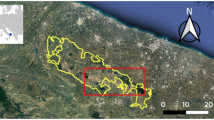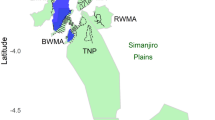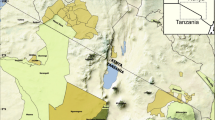Abstract
Monitoring the distribution of wild animals using appropriate methods and survey techniques is essential not only for sustainable management but also to avoid wastage of resources. This study applied remote sensing to investigate the factors influencing the distribution of herbivores in Nairobi National Park, Kenya. Impala was selected as indicator specie for the herbivores within the park, because the population of impala had drastically reduced over time. The influence of food availability, water and disturbance on herbivore presence was investigated. A positive significant statistical relationship between impala population density and feed availability was observed. However, the correlation between impala population density and water distance was negative, indicating less impalas as the distance from water sources increase. An interesting finding was the expectation of greater impala population presence next to roads. The study demonstrated a rapid method for gaining information useful for conservation and land use planning practices, such as in the determination of the carrying capacity or even for redistributing animals within the park.
Similar content being viewed by others
Article PDF
Author information
Authors and Affiliations
Rights and permissions
About this article
Cite this article
Obade, V., Clercq, E. Factors influencing impala distribution patterns in Nairobi National Park, Kenya. Nat Prec (2009). https://doi.org/10.1038/npre.2009.3799.1
Received:
Accepted:
Published:
DOI: https://doi.org/10.1038/npre.2009.3799.1



